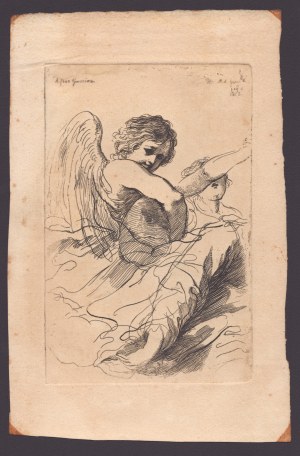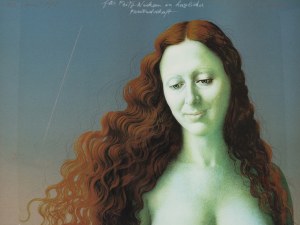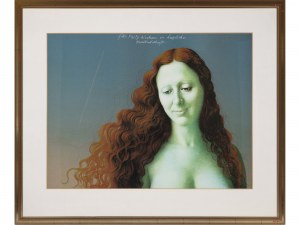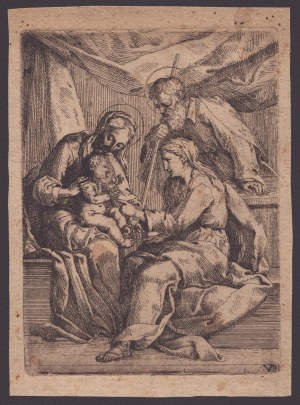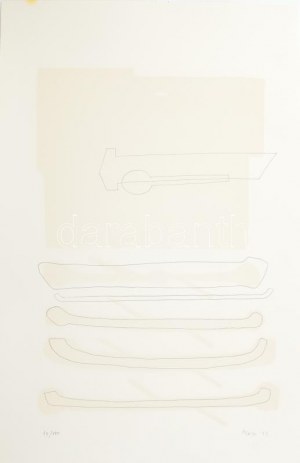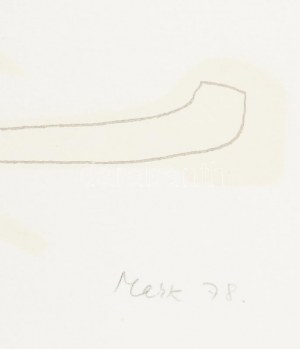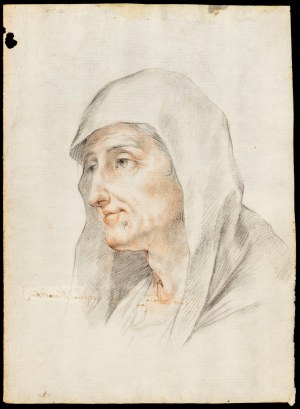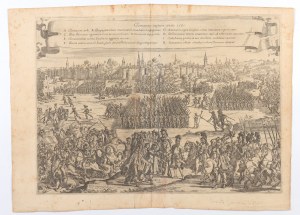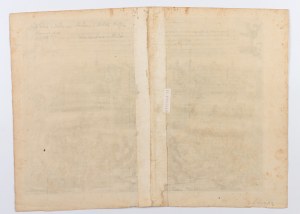collage, paper, 24 x 61.5 cm
signature, date and title on the reverse
unique
The collection of Matejko Collages is a continuation of the creative process that Anna Orłowskabegan while workingon the exhibition Pompier,mud of socrokoko (2019) concerning Nowa Huta. In her works, the artist juxtaposes fragments of Jan Matejko's works with images of nature or architecture. Sheusesas creative material - published during the communist era and bought by the artist at flea markets - illustrated albums of national and historical sites and with works of the national pompier. Working with collage is a kind of visual game of meanings. The process makes it easy to fragment and dissect the visual languages of historical painting and publications meant to show the beauty and greatness of People's Poland. The albums were meant to evoke a feeling of pride at the same time as defining its subject - they extol the magnificence of the Tatra Mountains, native flowers, cities, sportsmen, wildernesses, forests and hunting, palaces and folk art. Mixing them together, the artist looks for aesthetic similarities between the older and newer native narratives, wondering to whatextent theyhavealsoinfluencedwhat we cancall Polish visuality.She also analyzes the notion of the aesthetics of representation - a key concept to decode her artistic explorations. The process of creating a collage is technically less complex, unlike photography, which almost always requires special preparation. This apparent lightness of the technique - gluing a few pieces of paper together - is liberating for the artist, as it allows her to generate complex meanings without organizing a plan and travel, arranging approvals and painstaking processing of analog plates. Orlowska's collage also often operates with humor, gentle taunts with symbolic weight. The matter itself is also important here: the characteristic roughness of poor-quality prints, accessible to the broad masses, simplifies and sinks. The nuances arelost in the visible raster; on flimsy paper it's hard to tell where the photo- graphy ends and the reproduction of the painting begins. In other cases, the contrast between the black-and-white and color reproduction emphasizes exalted forms and shapes. The human figures inOrlowska's collages appearsparingly, and are often devoid of heads and faces. The inability to identify them as specific historical figures only underscores the kind of conventional pathos with which all heroes of public life - collectively and equally - were treated, fabricating these distinctive visual languages. What makes up the visual fabric are the poses, the draperies, the entire scenery around the figures. Orlovskaya has consistently avoided showing human images for years. More important is what is intentionally produced by people. Backgrounds, fabrics, objects, facades and gardens. The wilderness and the hustle and bustle of the battlefield. Orlovskaya makes us realize that the function of the visual languages she cites, despite the fact that they are separated by several eras, has the same goal - to build national identity with the help of aesthetics and the elaboration of historical memory. Establishing what is important, what is not, what is worth remembering and what is not, and where patriotic pride should flow.
BIO
Creating photographic objects tests the limits of the medium. The artist uses photography - mainly of architecture and interiors - to show the invisible layers of history and its ideological determinants, usually absent from the official narrative. She plays with various conventions, from documentation to creation, uncovering hidden myths, legends and fantasies about the past, and creating new constellations of meanings. Her objects, based on photographic images, create a dialogue with this imperfect medium. Orlova treats them as a research instrument for exploring, fragmentary by their nature, notions of knowledge and the work of memory.








